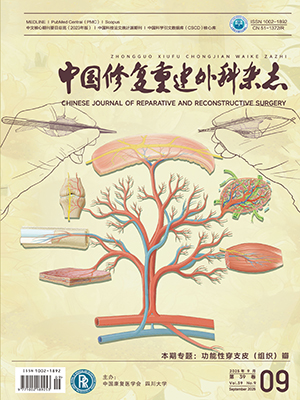OBJECTIVE: To investigate the feasibility of coralline hydroxyapatite (CHA) as scaffolds in bone tissue engineering. METHODS: The bone marrow stromal cells from 4-month New Zealand rabbits were harvested and cultured in vitro. After multiplied, dexamethasone was used to promote the osteoblastic phenotype of the cells. The cells were harvested and then seeded into CHA. By means of tissue engineering technique, osteoblastic cells/CHA complex were formed. The complex were implanted subcutaneously in nude mice. The CHA alone was implanted as control. Bone regeneration was assessed 6, 8 weeks after implantation by histological and roentgenographic analysis. RESULTS: After six weeks of implantation, x-ray film showed high-density signal, osteoid tissue formed under histological examination. Large amount of new bone were formed and connected to trabecularism 8 weeks after implantation in the experimental group. While in the control group, there were no new bone formation, but amount of fiber tissue grew into the pore of CHA 8 weeks after implantation. CONCLUSION: CHA may be used as a good scaffold material for bone tissue engineering.
Citation: SHI Peiliang,GU Xiaoming,CHEN Fulin,et al.. EXPERIMENTAL STUDY OF TISSUE ENGINEERED BONE WITH CORALLINE HYDROXYAPATITE AS SCAFFOLDS. Chinese Journal of Reparative and Reconstructive Surgery, 2001, 15(6): 373-376. doi: Copy
Copyright © the editorial department of Chinese Journal of Reparative and Reconstructive Surgery of West China Medical Publisher. All rights reserved




